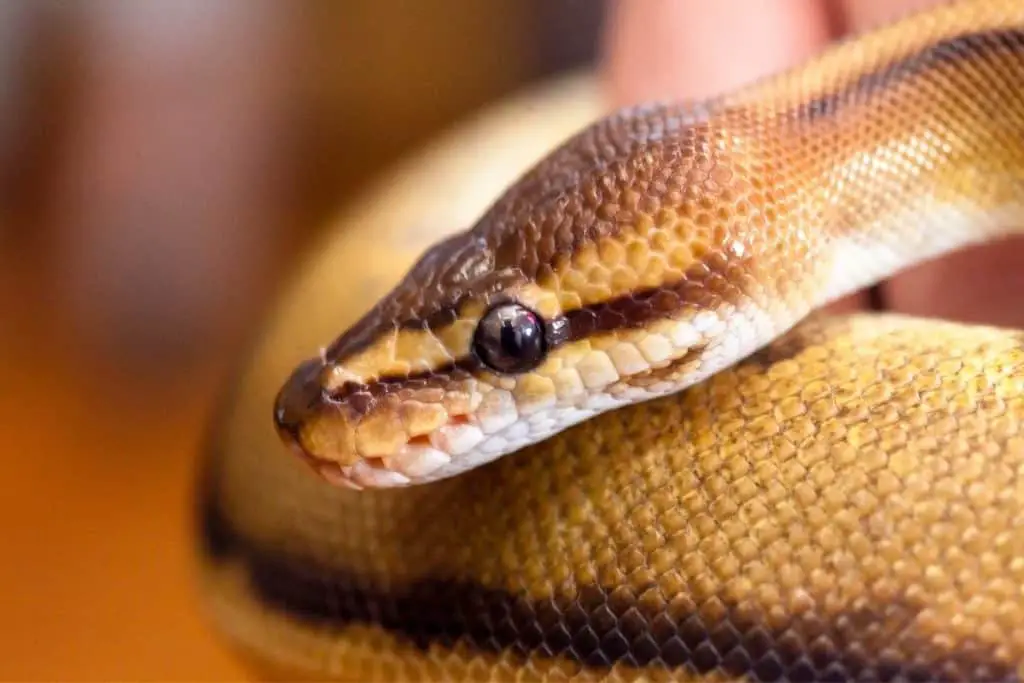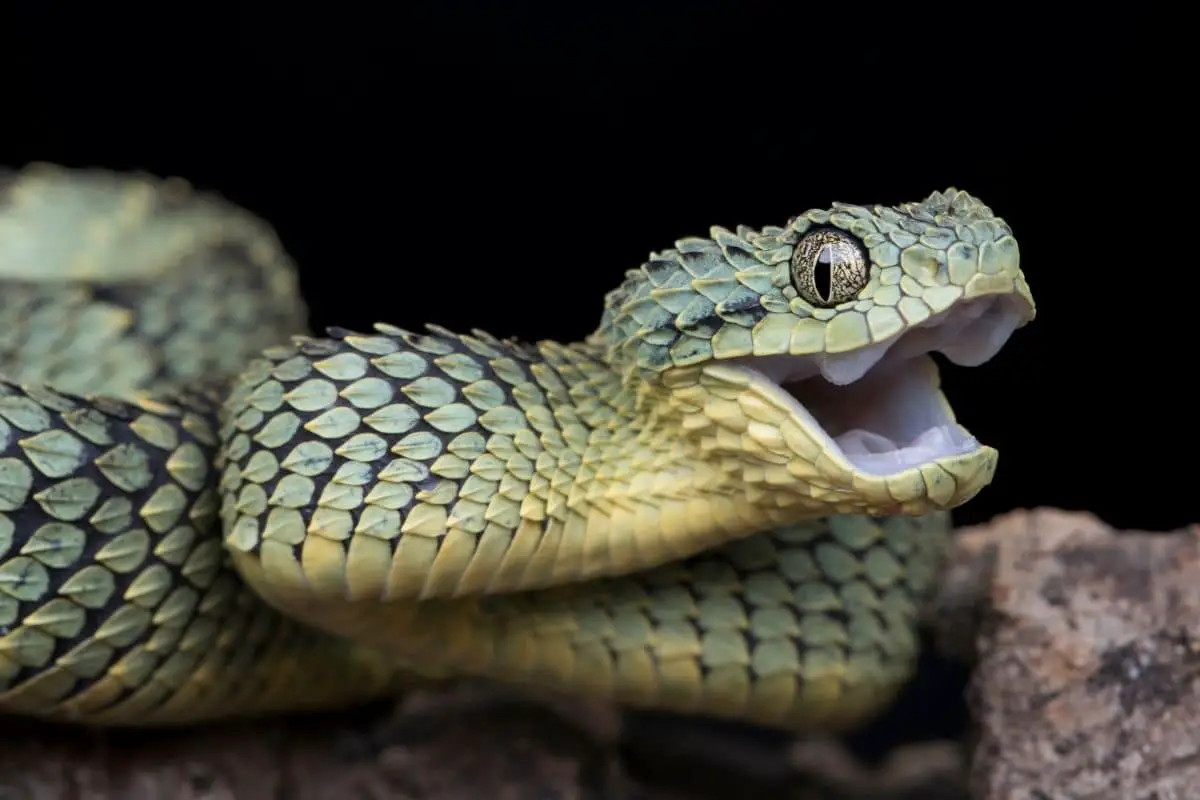In the animal kingdom, many animals use their body language to show how they feel. For example, a dog who is wagging his tail is generally happy and playful. But what about an animal that doesn’t have a tail to wag, whiskers to wiggle, or eyebrows to express with?
In other words, how do snakes show happiness? Snakes show happiness in subtle changes to their behavior such as responding better to your handling and being more relaxed while you handle them, being close to you more than usual, and being consistent in their feeding and sleeping routines.
So while the way snakes show their affection will not be as easy to spot as they are with other pets such as dogs or cats, if you are willing to pay attention, you will be able to spot when your pet snake is telling you she or he is happy.
In this article, we are going to look at the different ways snakes show happiness and how you can spot them.
Contents
10 Ways Snakes Show happiness

There are, of course, more ways that can tell you that they are happy, but in this article, we are going to only focus on the 10 most common ways snakes will tell you they’re happy.
You can also check out this article for the 3 ways how snakes show affection.
Here are the ways snakes show happiness;
They’re relaxed when you handle them
A happy snake will move its body in your palm as if it were floating. It may even sit in your hands without being limp or totally still, but alert and cheerful.
If the snake is uncomfortable when you handle them, you will notice them trying to move away to another spot and away from you. They may also go to their hiding spots in the cage when you try to pick them up to show they are uninterested.
Moving slowly when you touch them or pick them up
One way to tell if a snake is agitated is to observe if it tries to move away from your grasp in an attempt to flee.
A moving escape maneuver designed to keep you out of trouble. When held, a comfortable snake with your handling will move in relaxed and slow motion.
You can learn here how and when do snakes like to be held, touched, or pet.
Eating Normally
Another way to tell that your snake is happy is through its eating routines. A snake that is unhappy for any reason will refuse to eat or just not eat as it usually would, but a happy snake will eat regularly.
How much feeding is normal will depend, of course, on the size, age, and breed of the snake, but it’s safe to say that most snakes eat once every one to two weeks. If your snake goes for longer than two weeks without eating, it’s probably stressed or it could need medical attention.
Shedding Normally
It is critical for your snake’s safety that it sheds its skin on a regular basis, depending on the breed. Some adult snakes also shed their skins every month, while young snakes shed them every two weeks.
Some snake breeds, though, may only shed a few times per year. It’s important to note that shedding their skin can interrupt or disturb their feeding routines.
It, on average, takes about one to two weeks for snakes to shed their skins entirely, but sometimes certain parts of their skin do not come off easily. You can always help your skin by adding something like a piece of hard cardboard in its cage so the snake can rub its skin against it and shed the stuck parts.
If shedding doesn’t go smoothly – such as it takes too long or the skin comes off in batches, then the skin could be unhappy, ill, or stressed,
Normal Air Tasting
Snakes flick their tongues constantly, and it’s one of the important ways for snakes to observe and understand their environments, and although some think that snakes are licking the air, the truth is that snakes don’t actually lick anything.
If your snake is not flicking its tongue in normal intervals, it could be unhappy or stressed as it means the snake is losing interest in the environment around it. It could also mean that your snake is bored.
Hiding Normally
Snakes are only active for a few weeks at a time. They prefer to spend the majority of their time hiding. If your snake emerges from its hide to eat when it is supposed to, it is most likely overjoyed.
Sleeping Normally
Snakes sleep for most of their time, but you can’t tell because snakes do not have eyelids so you never see them with their eyes closed.
Most snakes can sleep for 20 hours after a meal, but if your snake is not getting enough sleep or sleeping too much, it could mean that they are unhappy or stressed as well.
5 Signs your snake is not happy

Now that we’ve discussed the signs to watch out for that tells you that your snake is happy, now let’s look at the 5 signs of unhappy snakes.
These signs are equally as important to know so you can take action and make changes to make your snake feel better.
Being tight, coiled, or unmoving when handled
If your snake is unhappy, it will become very still when you try to handle it. It might coil up so tightly that you can’t move it at all.
This reaction is usually a sign of fear or aggression and should not be taken lightly.
Hissing
A hissing noise is an obvious warning signal meant to scare off predators. This should never be ignored, as your snake is telling you that it feels threatened and fearful.
Striking
If your snake is in a defensive position and you’re too close, it will strike at whatever’s threatening it.
This should be taken very seriously as well, because snakes can deliver multiple strikes with their mouths open to defend itself.
Being less active than usual
Your normally energetic little buddy might stop moving around so much if it’s not happy. This could be a sign that it’s sick or doesn’t feel well.
Not eating
If your snake isn’t eating, there might be something wrong with its environment or diet. It might also be a sign that the snake is stressed out and unhappy.
How to make your snake happier?

Now that you know how to tell if your snake is happy or not, the next step is figuring out how to make it happy again.
There are many things you can do to help your snake feel better and return to its usual self.
Some of these include:
- Checking the temperature in your snake’s enclosure and making sure that it’s in a suitable range.
- Make sure your snake has access to hides where it can feel secure and safe from predators, such as birds or cats.
- Check your snake’s enclosure for any changes you might not have noticed before, like how much water is available or if the substrate needs replaced.
- If your snake is aggressive, handle it with caution and always use two hands.
- Provide a variety of food items that your snake will enjoy, such as live or frozen rodents, crickets, fish, and insects.
- Keep your snake’s environment clean by removing waste products regularly.
- Talk to an experienced herp veterinarian if you’re concerned about your snake’s health.
- Each snake is different, so some of the above might not apply to how you keep your pet. If in doubt or if something feels off, talk with an experienced herp veterinarian for advice!
Conclusion
It’s important to be able to tell when your snake is happy so you can provide it with an environment that meets its needs and makes it feel comfortable.
Watch out for the signs of an unhappy snake, as they can be just as serious as the signs of a happy snake.
If you’re not sure how to make your snake happy again, there are many things you can do to try and get it back to its usual self.
Always consult an experienced herp veterinarian if you have any concerns about your snake’s health or wellbeing.
Happy snakes make for healthy pets!
If you like this article, please share it!


